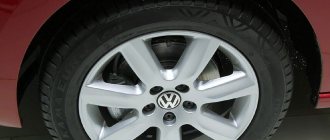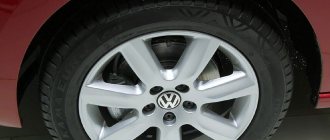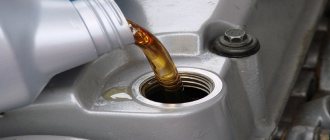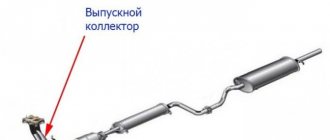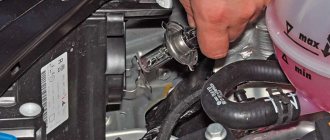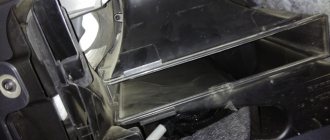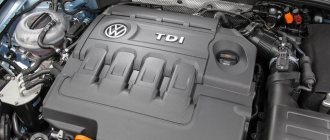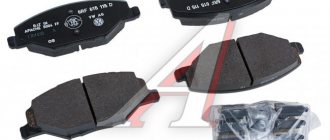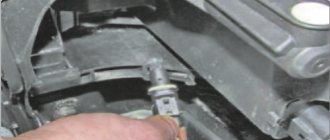Wheel parts of the German VW Polo car: tires, rollers, hubcaps are consumables. They wear out quickly, cannot withstand the vagaries of domestic roads, and become unusable. When purchasing new similar products, you must comply with certain requirements.
The use of products that are not sized can cause serious malfunctions in the vehicle’s chassis, steering, and contribute to the creation of an emergency situation on the road. In our review, we will tell you which wheels for the Volkswagen Polo sedan should be bought at a car store, as well as the rules for choosing tires and hubcaps for these car parts.
What information do you need to know before choosing wheels for a Volkswagen Polo?
The German car brand from the VAG concern, produced in Russia, has found a lot of fans. Along with some disadvantages, the Volkswagen Polo has many more advantages. These include such as the relatively low cost of the car and its chassis, adapted to Russian roads. The wheels are one of the main components of the chassis, providing reliable contact with the road surface and good ride softness. The components of a modern wheel are a rim, a tire and a decorative cap (optional). These parts must fit together and meet the vehicle manufacturer's specifications.
Original VW wheel caps are distinguished by the concern's logo located in the wheel hub cap
All about wheels
In order for a car to perform well on the road surface, the wheels must fully comply with the parameters of the suspension installed in a particular brand of car. Modern cars ride on two main types of wheels: steel and alloy. In turn, the group of light alloys is divided into cast and forged.
Features of steel wheels
Most budget models leave the factories with steel wheels. They are made by stamping from sheet steel, followed by welding of two parts - a plate and a rim. The main disadvantages of such designs:
- Heavy weight compared to alloy wheels. This degrades the performance of the car.
- Weak resistance to corrosion, to which discs with coatings made by electrophoresis using enamel are most susceptible.
- Unattractive appearance, poor balancing due to inaccuracies in manufacturing.
Steel wheels also have positive qualities, including:
- Low cost due to the simplicity of manufacturing technology.
- High strength and ductility. When subjected to external impact, the disks do not break, but are deformed. This increases the safety of vehicle operation.
- Possibility of eliminating deformations during impacts. The rolling method can remove dents and also weld small cracks.
VW Polo cars of the Trendline and Comfortline trim levels are equipped with steel wheels
Advantages and disadvantages of alloy wheels
Made from light aluminum and magnesium alloys. Light weight has a positive effect on the performance of the suspension in the area of its unsprung mass. The smaller this mass, the better the car’s handling and the responsiveness of the suspension to bumps and holes in the road surface. So, the main advantages of cast and forged light alloy rollers:
- light weight;
- better cooling ability of brake discs due to good ventilation;
- high manufacturing precision, facilitating good balancing;
- good corrosion resistance created by the aluminum dioxide film on the surface of the discs;
- good appearance, allowing you to do without caps.
The main disadvantages of cast alloy wheels:
- fragility caused by the grain structure of the material;
- higher price compared to steel rollers.
The main drawback is that forged wheels lack fragility. They are the lightest and most durable, do not splinter or crack upon impact. But you have to pay for this with a higher price for these rollers. Light alloy aluminum wheels are optimal in terms of price-quality-performance ratio. They are most popular among Russian car enthusiasts.
Magnesium rollers are stronger than aluminum, but are much more expensive
Marking
In order to choose the right wheel, you need to know how it is marked. There is a single marking for all types of rollers. For example, let's take one of the markings of the original alloy wheel for the VW Polo - 5Jx14 ET35 PCD 5x100 DIA 57.1. So:
- Combination 5J - the first digit 5 indicates the width of the rim, expressed in inches. The letter J informs about the profile shape of the disc edges. Original wheels for VW Polo can also be 6 inches wide. Sometimes the marking may have the letter W before the number.
- The number 14 is the diameter of the disc, expressed in inches. It may vary for the same car, since this value depends on the size of the tire being mounted. Some markings allow the letter R before the number.
- ET 35 - disk offset. It is the distance from the disk mounting plane to the rim symmetry plane, expressed in millimeters. Depending on the design, the offset can be either positive or negative. In rims for Volkswagen Polo, the offset is 35, 38 or 40 mm.
- PCD 5×100 - the number and diameter, expressed in millimeters, along which the holes for the mounting bolts are located. VAG discs have 5 holes drilled around a circle with a diameter of 100 mm. This parameter is also called bolt pattern.
- DIA 57.1 is the diameter of the wheel hub centering lug, expressed in millimeters. Sometimes it is shown in the marking with the letter D. For Volkswagen Polo, the size of the central hole in the disk cannot be less than 51.7 mm. A minimal upward deviation is allowed.
- H (HAMP) – translated means protrusion or mound. Indicates the presence of ring protrusions necessary for fixing the beads of tubeless tires. When there is one protrusion, this parameter is displayed as H. If there are two protrusions, which is necessary to install run-flat tires with reinforced sidewalls, then the marking should be H2.
Tubeless tires can only be mounted on wheels that have HAMP
It should be remembered that when the disc offset changes, the operating conditions of all suspension units change. Therefore, you should not go beyond the values recommended by the car manufacturer. Knowing what the wheel markings mean, you can avoid making the wrong choice when buying wheels for your Volkswagen Polo.
Everything you need to know about tires
A wheel tire is a complex and multifunctional product. Rubber must provide:
- good contact with the road surface;
- reliable vehicle control;
- efficient acceleration and braking of the vehicle.
It is the slopes that determine the vehicle's maneuverability in poor road terrain, as well as fuel consumption and the nature of the noise produced when driving. Modern tires differ in several ways:
- diagonal and radial, with different design features;
- chamber and tubeless, with different options for sealing the internal space;
- summer, winter, all-season, all-terrain, depending on the pattern and shape of the treadmill.
Design features
Today, radial tires prevail on the market; diagonal tires are almost never produced due to their outdated design and short service life. The design differences are due to the location of the cord material, which gives the rubber strength and flexibility. Cord is thin threads made of viscose, cardboard or cotton. Thin metal wire is also used to make them. This material is becoming increasingly popular among manufacturers and motorists.
The most modern technologies are used for the production of tires
Below are the characteristics of the main components of radial tires:
- The frame is the main component that takes loads from the outside and compensates for the air pressure in the cavity from the inside. The quality of the frame determines the strength characteristics of the slope. It is a rubberized cord thread, which is laid in one or several layers.
- Breaker is a protective layer located between the frame and the tread layer. Protects the entire structure from damage, adding strength to it, and also prevents delamination of the frame. It consists of layers of metal cord wire, the space between which is filled with artificial rubber.
- The protector is a thick layer located on the outside. It is in contact with the road surface, transferring forces to it during acceleration and braking. Its surface has the shape of a relief, covered with patterned grooves and protrusions. The shape and depth of this pattern determine the conditions in which the tire is best used (summer, winter or all-season tires). The tread ends on both sides with mini-sidewalls or shoulder areas.
- Sidewall is that part of the tire that is located between the shoulder areas and the bead. They are usually marked. They consist of a frame and a relatively thin rubber layer that protects from external influences and moisture.
- The side zone is responsible for attaching to the wheel rim and sealing the internal space if the slope is tubeless. In this rigid part, the frame cord is wrapped around a ring made of rubber-coated steel wire. The top of this ring is covered by a rubber filling cord, which provides an elastic transition from the hard ring to the soft rubber of the sidewall.
As you can see, the design of modern tires is quite complex. It is this complexity, which is the result of many years of research, trial and error, that provides a long service life of rubber - more than 100 thousand kilometers.
Tire markings
European-made rubber is marked in accordance with a single standard. To get acquainted, we will use the marking of one of the types of tires installed on the Volkswagen Polo sedan conveyor - 195/55 R15 85H:
- 195 - tire profile width, expressed in millimeters;
- 55 - ratio of height to profile width in percent; when calculated, the height is 107.25 mm;
- R is an index giving information about the radial location of the cord threads;
- 15 — disk rim diameter in inches;
- 85 — index value characterizing the tire’s load capacity of 515 kg;
- H is an index that determines the maximum speed of 210 km/h at which the wheel can operate.
In addition to the dimensions, other equally important parameters are displayed on the sidewall
Along with the above characteristics, there may be additional parameters:
- Week and year of issue, as a sequence of 4 digits. The first two indicate the week, the rest indicate the year of release.
- Reinforced - means a reinforced type of rubber.
- Outside - this inscription is placed on the outside of tires with an asymmetric tread pattern so as not to be confused during installation.
- M&S - tires should be used in dirty or snowy weather.
- R+W - designed for driving on roads in winter (road + winter).
- AW - designed for any weather.
Instead of letter designations for weather operating conditions, tires can be marked with symbols (rain, snowflakes). In addition, the brand name and model of the tire, as well as the country of manufacture, are stamped on the sidewalls.
Standard wheels
In the standard version, the Volkswagen Polo sedan is equipped with “stampings” 5J-14, as well as 6J-15. In this case, 5 and 6 are the rim width, which is measured in inches on alloy wheels, J is the rim flange profile shape, and 14 and 15 are the rim diameter.
If you take a Polo in a Highline sedan body, it is marked with wheels 6J*15 ET 40 PCD 5*100. The correct location of the bolts is very important here, the distance between which must be maintained strictly at 100 mm. Disc offset (ET) is the distance to the plane of symmetry of the rim from its direct mounting. The unit of measurement used is millimeter. This is all provided for light alloy wheels.
The Volkswagen Polo is produced from the factory with an offset of 35 to 40 mm. In this case, the bolts are always located at a distance of 100 mm and are screwed in in the amount of 5 pieces.
The standard wheels will differ from each other in terms of bodywork. The parameters will be as follows:
- GF-6NAHW. All versions of the car produced in 2000 are equipped with wheels measuring 14*6.0 or 15*6.0. For this reason, the offset of the disk 43 and 45, respectively, will differ, which indicates the impossibility of using identical disks on different vehicles.
- ABA-9NBUD. If you take a car made in 1996, the wheels are 13*5.5 with an offset of 43. In 2007, 14*6.0 with a similar offset were installed on the car.
- GH-9NBBY. Wheel samples changed almost every year, as not only the size was adjusted from 14 to 16, but also the rim width from 6.0 to 6.5. But the offset and drilling remained unchanged.
- GH-9NBKY. In 2004-2007, the disks did not change and remained the same, namely 14 * 6.0. The only thing that is different is for the 2006 model. a rim diameter of 15 could be used, with all other identical parameters.
They use 5*100 drill bits almost everywhere. The only exception is the 2000 model GF-6NAHW body, which uses 4*100.
Engineers at the German car manufacturer do not rule out installing wheels with a diameter of R16 instead of standard ones. This is more focused on tuning and more on classic performance. But if the vehicle is purchased from a showroom, you can immediately forget about warranty service related to the chassis. That is, only the owner should decide this. This is called an experiment attempt, for which no one bears responsibility.
What wheels are suitable for the Volkswagen Polo sedan, how to choose wheels and tires
The automaker installs three types of wheels on Volkswagen Polo sedan cars: 14" and 15" stamped wheels with a cap, as well as 15" alloy wheels.
Steel wheels come complete with decorative caps
Alloy wheels are included in the top-of-the-line Highline package. They come with tires in sizes 195/55 R15 and 185/60 R15. Steel wheels 6Jx15 ET38 are included in the Comfortline car kit and are mounted together with 185/60 R15 tires. Wheels from Highline are also suitable for this modification. The budget Polo Trendline series can only boast steel wheels with a diameter of 14 inches and 175/70 R14 wheels.
For cars manufactured before 2015, the following alloy wheels manufactured by VAG are suitable:
- 6RU6010258Z8–6Jx15H2 ET 40 Riverside, price - from 13,700 rub. and higher;
- 6R0601025BD8Z8 – 6Jx15H2 ET 40 Estrada, cost - from 13,650 rubles;
- 6R0601025AK8Z8 – 6Jx15H2 ET 40 Spokane, price - from 13,800 rubles;
- 6C0601025F88Z–6Jx15H2 ET 40 Novara, cost - from 11 thousand rubles.
The first code in the list is the catalog number. If the Polo sedan was released after 2015, you can add the following to the above disks:
- 6C06010258Z8–6Jx15H2 ET 40 Tosa, from 12,600 rubles and more;
- 6C0601025LFZZ–6Jx15H2 ET 40 5/100 Linas, minimum price - 12,500 rub.
For winter use, the automaker recommends 5Jx14 ET 35 wheels with 175/70 R14 tires.
Selection of non-original wheels
There are many discs from third-party manufacturers offered on the Russian market. For example, Russian-made 5Jx14 ET35 alloy wheels can be purchased at a price of 2,800 rubles per piece. Standard size 6Jx15 H2 ET 40, manufactured in Russia, will cost a little more, from 3300 rubles.
Those car owners who want to change the appearance of their car purchase alloy wheels with wider rims, up to 7 inches wide. The rim diameter can also be increased to 17 inches, but then you will have to select low-profile tires for it. The bolt pattern should remain the same - 5/100 or 5×100. The diameter of the center hole DIA should match the original (57.1 mm) or be slightly larger, but complete with installation rings that will help eliminate the difference in the diameter of the hub and the disc mounting hole.
It is better not to use an offset size of more than 40, although discs with a larger value are also suitable. The automaker recommends not doing this, since the load on the chassis will change and the car will also behave differently. With a larger offset, the tires will be positioned deeper and the wheel track will become smaller. There is a danger that when turning, the rubber will come into contact with the front fender liners. With a smaller offset, the tires will move outward. With such changes, you need to carefully select tire sizes.
Non-original wheels made in China are cheaper, but lose their appearance faster and are less durable
The choice of car tires on the market is huge. There are Russian and foreign-made skates that differ significantly in quality, mileage and cost. For safe driving, every Russian car owner must have two sets - summer and winter tires.
If you want to buy summer tires for 14- or 15-inch wheels that will fit the Volkswagen Polo sedan, you can choose from many offers. The price starts, on average, from 3 thousand rubles per piece. The more famous the manufacturer, the higher the cost. For example, prices for Bridgestone tires of various brands start at 4,500 rubles. Winter tires are sold in the same price range.
The price range of Michelin tires starts from 5,300 rubles
Video: how to choose wheels for a car
https://youtube.com/watch?v=dTVPAYWyfvg
Video: criteria for choosing summer tires for a car
https://youtube.com/watch?v=6lQufRWMN9g
Video: choosing winter tires for your car
https://youtube.com/watch?v=JDGAyfEh2go
Reviews from car owners about some brands of tires and wheels
Hankook car tires are great tires. My wife and I drove on tires from this manufacturer for 6 seasons (spring, summer, autumn). We probably drove about 55 thousand, using it in different conditions - around the city and outside the city. In general, we are delighted with these tires, they are absolutely like new. By the way, we only had enough tires for 2 seasons. The tires make little noise, are soft, and hold the road superbly.
Jasstin84, Cherepovets
https://otzovik.com/review_6076157.html
Summer tires Bridgestone Turanza, 15 inches in diameter, were recommended to me 5 years ago by a familiar tire shop owner who said that they were very reliable. At that time I had little understanding of these things, so I trusted the opinion of a professional. It turned out that everything was true. Some time after this, I had an accident. A car making a left turn did not let me through the intersection, hit me in the side and threw me onto the sidewalk. I slightly missed the hood and hit the traffic light. The car service later told me that softer tires would not have survived such an adventure. The only drawback that I found is the noise of this rubber.
rem_kai
https://irecommend.ru/content/mne-ponravilis-188
Michelin Energy Saver summer car tires - after using Michelin tires, I’m unlikely to switch to others. Advantages: holds the road in bad conditions, does not make noise, wear-resistant. Disadvantages: high price, but it matches the quality. They hold the road well, even in wet weather. After changing them several times, before the start of the season and after finishing at the tire shop, each time they say that I made the best choice among the tires.
Neulovimaya, Minsk
https://otzovik.com/review_5139785.html
Wheels for Volkswagen Polo sedan R15. Advantages: safe, will last for more than one year. Disadvantages: poor quality of coating. Original wheels 6Jx15 H2 ET 38. Maximum balancing weights (including Pirelli tires) 20-25 grams - normal, but not ideal. The main thing is that after one winter season, spot rust appeared along the edge of the rim of the disc. The paintwork is not a fountain.
Shoper 68, St. Petersburg
https://otzovik.com/review_3245502.html
Disc selection
There is a huge range of wheels on the market that can be easily installed on a Volkswagen Polo car. They can be made of steel or casting. The dimensions are also different, which will fully depend on the car model, year of manufacture and other parameters.
Much will depend on the manufacturers, who have a slightly different approach to the process of creating wheels for cars, which affects the quality and duration of the operating period. Among them, the most popular manufacturers are:
- K&K. Most often, original discs of high quality are offered. Presented in a classic silver color, size p15*J6 ET 40. Russian production is also pleasant in price. The cost of one disc is approximately 3,500 - 4,000 rubles.
- Alutec.
- Le Mans.
- Milan.
- Sakura.
This all applies to the creators of alloy wheels, which bring great attractiveness to vehicles. But as mentioned earlier, you should not experiment, especially if you own a car from a dealership that is covered by warranty. The manufacturer Wolf has the best quality. But here it offers consumers even a diameter of R17 with J7.5. The price will vary between 5,000 – 6,000 rubles, depending on the place of purchase.
Cheaper options on the market are brands for the Volkswagen Polo sedan such as Akula, M33, CR-06, Kyoto, the cost of which starts from 2,500 - 3,000 rubles.
There is a purchase option for installing conventional “stampings”, the cost of which ranges from 1,000 – 1,500 rubles. Article numbers AR075, 7280T, X40028 and other options are usually used. Much depends on the diameter of the stamped disc and its other parameters, which are shown in the photo.
How to protect Volkswagen Polo wheels from theft
Not every car owner can keep his car in a garage or in a paid parking lot. Most residents of large cities are forced to leave their cars in unguarded places - in parking lots near their houses. Unfortunately, such vehicles are most at risk of theft or robbery. One effective way to protect your wheels from theft is to purchase security bolts.
Some secrets are sold together with plugs, which are difficult to remove without a special tool.
It is best to buy secrets of a complex shape that can be completely or partially drowned in a cast disk. It will be difficult to get to such a secret bolt with a key or chisel. Original security bolts, produced by VAG, with catalog number 5Q0698137, cost from 2,300 rubles. They fit all original wheels - both stamped and cast. Locks made in Germany by McGard, Heyner and ADL have proven themselves well.
Volkswagen Polo car owners, having read the above information, can choose the wheels and tires for their cars themselves. Among the huge number of offers, you should not pay attention to cheap products, since their quality and service life leave much to be desired. Properly selected, high-quality wheels determine not only the ride comfort, but also the controllability and safety of the vehicle in difficult weather conditions.
Mounting bolts
The fit of the bolts used on standard discs is spherical. They should be of the following type:
- Bolt cap for fixing the wheel – 3СО 601 173.
- Wheel security bolts included M14X1.5x27.5, 1KO 698 137A.
- WHT 001 812 is available for a single bolt of this size.
The correct bolt pattern guarantees a high-quality and long-lasting ride without consequences. You should be careful here, especially when installing non-standard wheels.
Parameters for various other brand models
The Touareg wheel bolt pattern and other required rim dimensions are equal to the following data:
- The number of mounting holes and the diameter of their location circle is 5x130;
- The diameter of the car hub is 71.5 millimeters;
- Rim diameter - from 17 to 20 inches;
- Rim offset - from 55 to 60 millimeters;
- Recommended width is 7.5 to 9.0 inches.
The bolt pattern for the Tiguan and the recommended wheel sizes for it are as follows:
- The rim drilling is 5×112;
- Rim width - from 6.5 to 9.0 inches;
- Rim diameter - from 16 to 19 inches;
- Wheel offset - ET from 33 to 38 millimeters;
- The diameter of the central hole is 57.1 millimeters.
Latest generation Volkswagen Touareg model
The Jetta wheel bolt pattern is 6 and the rim dimensions are equal:
- The rim drilling is 5×112;
- Rim width - from 6.0 to 8.0 inches;
- Rim diameter - from 16 to 18 inches;
- The diameter of the central hole of the rim is 57.1 millimeters;
- Wheel offset - ET from 47 to 54 millimeters.
Golf wheel bolt pattern 2 and other dimensions are equal:
- The rim drilling is 4×100;
- Rim width - from 5.0 to 5.5 inches;
- Rim diameter - from 13 to 15 inches;
- The diameter of the central hole of the rim is 57.1 millimeters;
- Wheel offset is 45 millimeters.
Drilling parameters for the German Volkswagen Polo sedan must be observed when selecting wheels. This parameter can be measured independently, but this does not guarantee perfect accuracy. It is recommended to look it up in the official technical documentation for the car.
What does this parameter include on a Volkswagen car?
The bolt pattern, regardless of model and configuration, is designated PCD, which stands for Pitch Circle Diameter. To explain it as simply as possible, the meaning of the indicator is the required number of bolts to attach the rim to the suspension and the diameter on which the mounting holes are located. This information is important when choosing a new set of wheels. To avoid unnecessary problems, this data is unchanged for one specific model.
Visually, it is almost impossible to correctly determine the diameter as opposed to the number of fasteners. You can measure the size yourself: for this you will need a ruler, but it is better to use a caliper. The obtained data must be inserted into special formulas, which are different for disks with three, four and five fasteners.
It is imperative to remember that the incorrect selection of wheels or tires for VW models can, at a minimum, simply waste a lot of time. Because unsuitable wheels will need to be returned back to the store and replaced with normal ones. In the worst case, incorrect installation can lead to a deterioration in the level of traffic safety due to the fact that the wheels are directly responsible for the quality of the vehicle's behavior on the road surface.
Wheel bolt pattern Volkswagen polo sedan 2014 1.6 (105 hp, gasoline)
The highlighted entries mean factory sizes, the rest are replacement options
Volkswagen Polo 2014 1.2TSi
Generation: Mk5 Power: 89 hp | 66 kW | 90 PS Engine: l4, gasoline Central hole diameter: 57.1 mm Thread: M14 x 1.5 Fastening type: bolt Years of production: 2009–2016
TireDiskDrillPressure
| 185/60R15 | 6Jx15 ET41 | 5×112 | 1.9 (28) |
| 195/50R16 | 6.5Jx16ET43 | 5×112 | 2.1 (30) |
| 215/45R16 | 7Jx16 ET45 | 5×112 | 2.3 (33) |
Volkswagen Polo 2014 1.4TSi
Generation: Mk5 Power: 148 hp | 110 kW | 150 PS Engine: l4, gasoline Central hole diameter: 57.1 mm Thread: M14 x 1.5 Fastening type: bolt Years of production: 2009–2016
TireDiskDrillPressure
| 215/40R17 | 7Jx17 ET45 | 5×112 | 2.3 (33) |
| 215/35R18 | 7.5Jx18ET41 | 5×112 | 2.5 (36) |
Volkswagen Polo 2014 1.2TSi
Generation: Mk5 Power: 109 hp | 81 kW | 110 PS Engine: l4, gasoline Central hole diameter: 57.1 mm Thread: M14 x 1.5 Fastening type: bolt Years of production: 2009–2016
TireDiskDrillPressure
| 185/60R15 | 6Jx15 ET41 | 5×112 | 1.9 (28) |
| 195/50R16 | 6.5Jx16ET43 | 5×112 | 2.1 (30) |
| 215/45R16 | 7Jx16 ET45 | 5×112 | 2.3 (33) |
Volkswagen Polo 2014 1.4TSi
Generation: Mk5 Power: 189 hp | 141 kW | 192 PS Engine: l4, gasoline Central hole diameter: 57.1 mm Thread: M14 x 1.5 Fastening type: bolt Years of production: 2009–2016
TireDiskDrillPressure
| 215/40R17 | 7Jx17 ET45 | 5×112 | 2.3 (33) |
| 215/35R18 | 7.5×18 ET41 | 5×112 | 2.5 (36) |
Volkswagen Polo 2014 1.2TSi
Generation: Mk5 Power: 89 hp | 66 kW | 90 PS Engine: l4, gasoline Central hole diameter: 57.1 mm Thread: M14 x 1.5 Fastening type: bolt Years of production: 2009–2016
TireDiskDrillPressure
| 185/60R15 | 6Jx15 ET41 | 5×112 | 1.9 (28) |
| 195/50R16 | 6.5Jx16ET43 | 5×112 | 2.1 (30) |
| 215/45R16 | 7Jx16 ET45 | 5×112 | 2.3 (33) |
Volkswagen Polo 2014 1.0TSi
Generation: Mk5 Power: 109 hp | 81 kW | 110 PS Engine: l3, petrol Central hole diameter: 57.1 mm Thread: M14 x 1.5 Fastening type: bolt Years of production: 2009–2016
TireDiskDrillPressure
| 185/60R15 | 6Jx15 ET41 | 5×112 | 1.9 (28) |
| 185/55R16 | 6.5Jx16ET43 | 5×112 | 2.1 (30) |
Volkswagen Polo 2014 1.2TSi
Generation: Mk5 Power: 109 hp | 81 kW | 110 PS Engine: l3, petrol Central hole diameter: 57.1 mm Thread: M14 x 1.5 Fastening type: bolt Years of production: 2009–2016
TireDiskDrillPressure
| 185/60R15 | 6Jx15 ET41 | 5×112 | 1.9 (28) |
| 195/50R16 | 6.5Jx16ET43 | 5×112 | 2.1 (30) |
Volkswagen Polo 2014 1.4TDi
Generation: Mk5 Power: 103 hp | 77 kW | 105 PS Engine: l4, diesel Central hole diameter: 57.1 mm Thread: M14 x 1.5 Fastening type: bolt Years of production: 2009–2016
TireDiskDrillPressure
| 185/60R15 | 6Jx15 ET41 | 5×112 | 1.9 (28) |
| 175/70R14 | 5.5Jx14ET38 | 5×112 | 1.8 (26) |
| 215/45R16 | 7Jx16 ET45 | 5×112 | 2.1 (30) |
Volkswagen Polo 2014 1.4TSi
Generation: Mk5 Power: 148 hp | 110 kW | 150 PS Engine: l4, gasoline Central hole diameter: 57.1 mm Thread: M14 x 1.5 Fastening type: bolt Years of production: 2009–2016
TireDiskDrillPressure
| 215/40R17 | 7Jx17 ET45 | 5×112 | 2.3 (33) |
Volkswagen Polo 2014 1.6i
Generation: Mk5 Power: 109 hp | 81 kW | 110 PS Engine: l4, gasoline Central hole diameter: 57.1 mm Thread: M14 x 1.5 Fastening type: bolt Years of production: 2009–2016
TireDiskDrillPressure
| 185/60R15 | 6Jx15 ET41 | 5×112 | 1.9 (28) |
Volkswagen Polo 2014 1.8TSi
Generation: Mk5 Power: 189 hp | 141 kW | 192 PS Engine: l4, gasoline Central hole diameter: 57.1 mm Thread: M14 x 1.5 Fastening type: bolt Years of production: 2009–2016
TireDiskDrillPressure
| 215/40R17 | 7.5Jx17 ET41 | 5×112 | 2.3 (33) |
| 215/35R18 | 7.5Jx18ET41 | 5×112 | 2.5 (36) |
Tires
Varieties
The tires on the Polo Sedan R15 are responsible for the comfortable movement of the car on the roads. Based on weather conditions, summer or winter tires are installed on the car, as well as all-season tires.
- Summer tires, unlike winter tires on a 15-diameter Volkswagen Polo sedan, are less noisy when driving and have a more straightforward tread pattern. They have excellent speed characteristics.
- What winter tires to put on a Volkswagen Polo sedan is decided by the owner of the German car himself. It all depends on the operating conditions of the vehicle. For driving on city streets at temperatures around zero degrees, European tires are suitable. The tread of such tires is distinguished by the presence of a large number of sipes necessary to drain slurry or water. They may have spikes for driving on slippery roads.
The Scandinavian type of winter tires for Volkswagen Polo sedan in sizes R15, R16, R17 is characterized by a soft compound, rubber material, and a large number of deep channels. The presence of pronounced zones, or spots as they are called, on the tread ensures reliable grip on the road surface. Such tires are used at low temperatures in northern regions with abundant snow cover.
Universal rubber is used year-round, but its use is limited by temperature: from -5 to +10 degrees.
In cold weather, the use of all-season tires on VW Polo is prohibited: the rubber hardens, which can lead to unpredictable situations on the road. In hot weather, it also loses its performance characteristics and wears out quickly.
Winter tires for Volkswagen Polo sedan
Tire sizes
The table shows what tire sizes for the Volkswagen Polo sedan should be installed on cars with different power units.
| Engine | Standard size | Speed index | Load Index | Pressure front/rear |
| 1395 cm3, 125 l. With. | 195/55R16 185/60R15 | T T | 85 84 | 1,8/2,0 1,8/2,0 |
| 1598 cm3, 90 l. With. | 185/60R15 175/70R14 | T T | 84 84 | 1,8/2,0 |
| 1598 cm3, 110 l. With. | 195/55R15 | T | 84 | 1,8/2,0 |
The T speed index means that this tire size for the VW Polo sedan can be used when driving up to 190 km/h. A coefficient of 85 and 84 shows that the tire can withstand a load of 515 and 500 kg, respectively.
In addition to the indicated values, there are also options for tire sizes, the use of which will not lead to disruption of the vehicle, for example, 195 by 65 for the Polo sedan.
Polo sedan on summer tires
Is it possible to install wheels with an unsuitable bolt pattern?
Some motorists, in an attempt to save on the purchase of spare parts with the necessary parameters, purchase products that do not correspond to the car brand. Such wheels are subjected to self-processing, the hub hole is widened, the location of the bolts is changed, and then they are installed on the car.
Theoretically, such a modification is possible, but the work must be carried out with maximum precision. It is impossible to measure a disc so correctly in a garage. And inaccurately drilled cutouts lead to wheel runout, destruction of the hub and suspension elements, and disruption of vehicle stability on the road.
Competent modification of the car in conditions close to factory ones is not economically feasible. The work will cost more than purchasing a wheel that initially matches all sizes.
